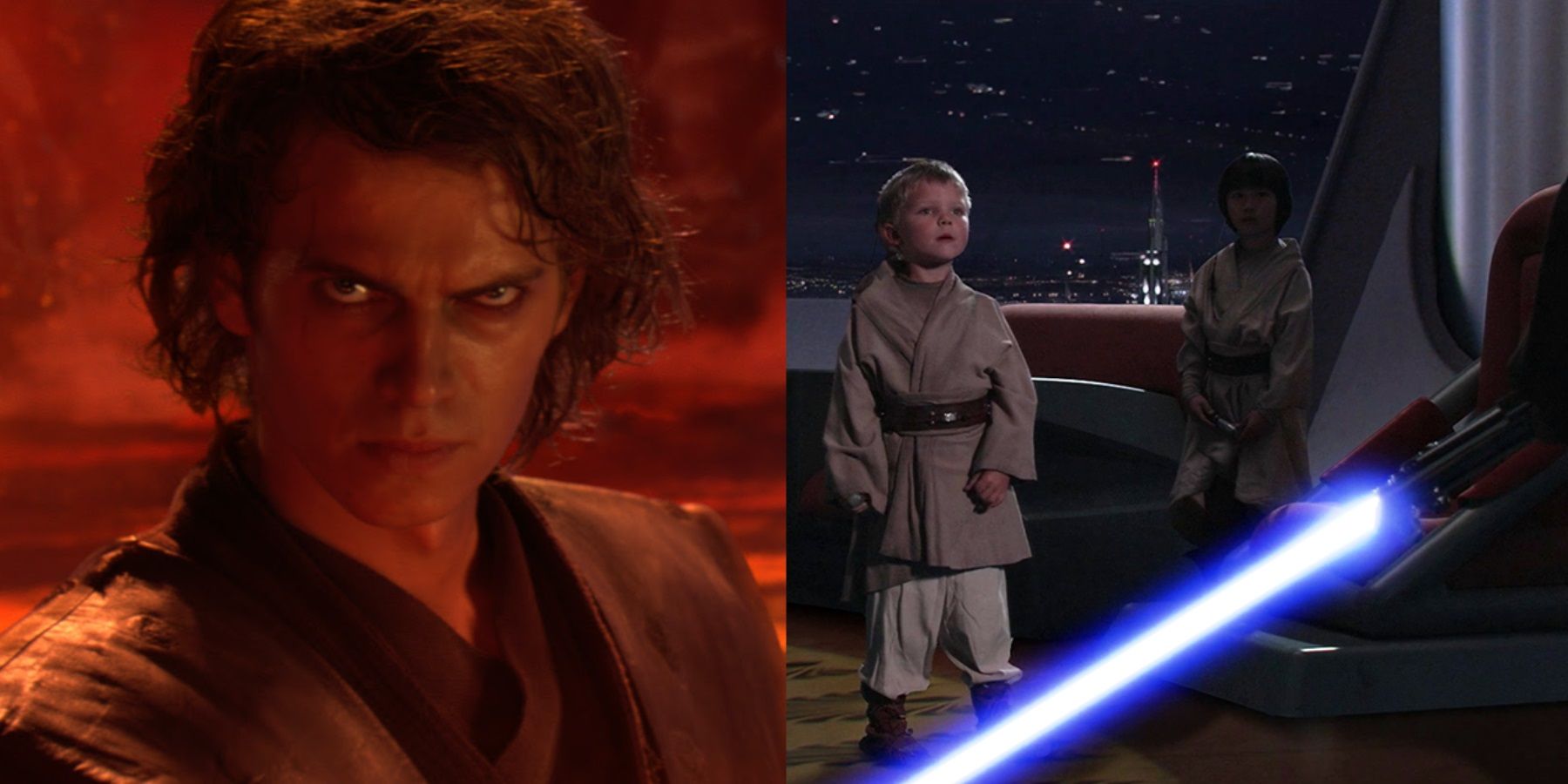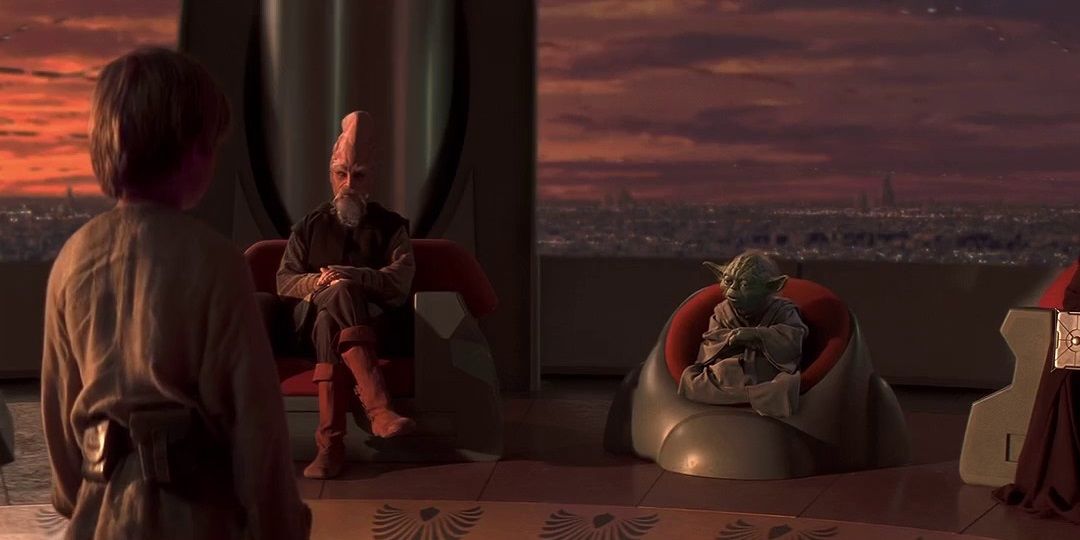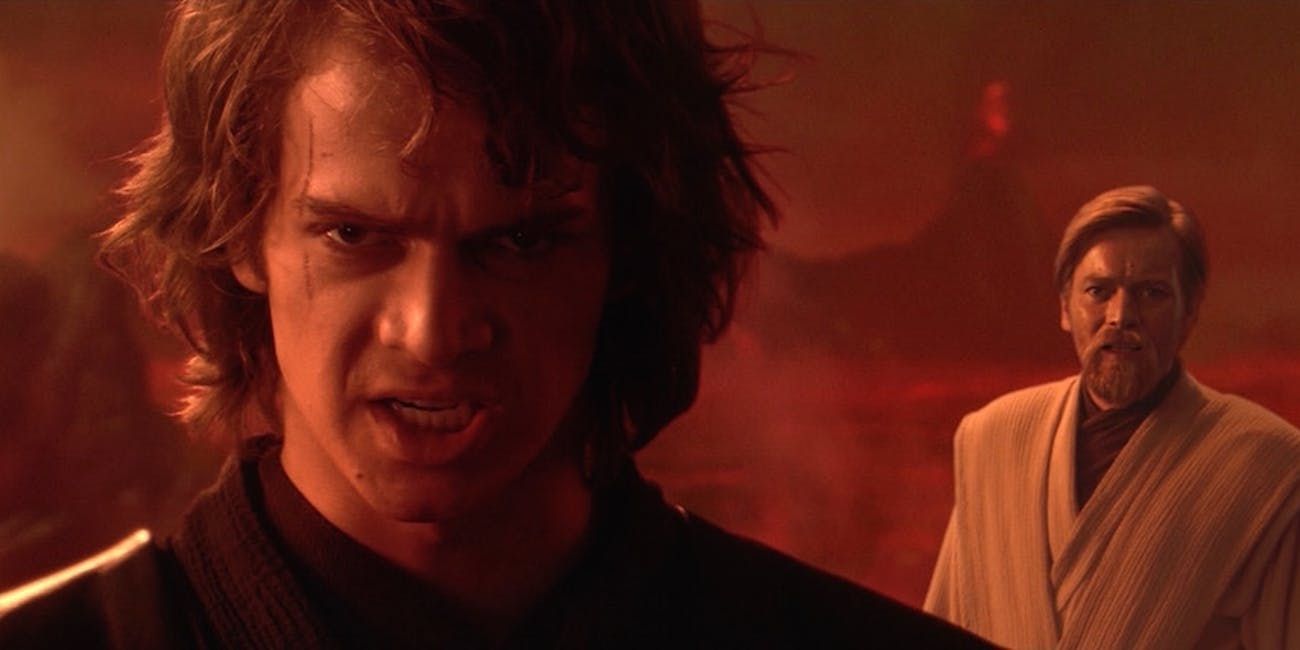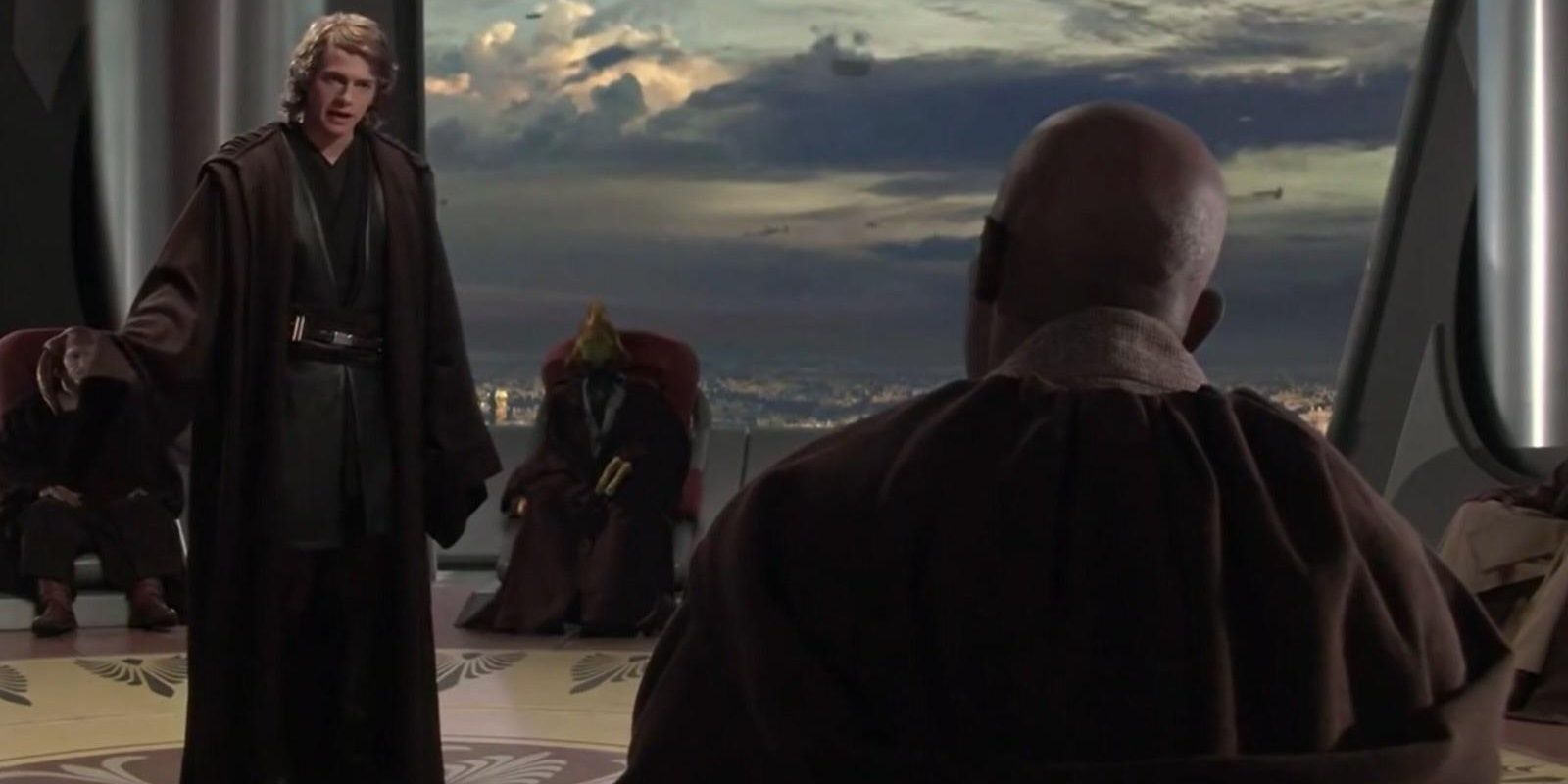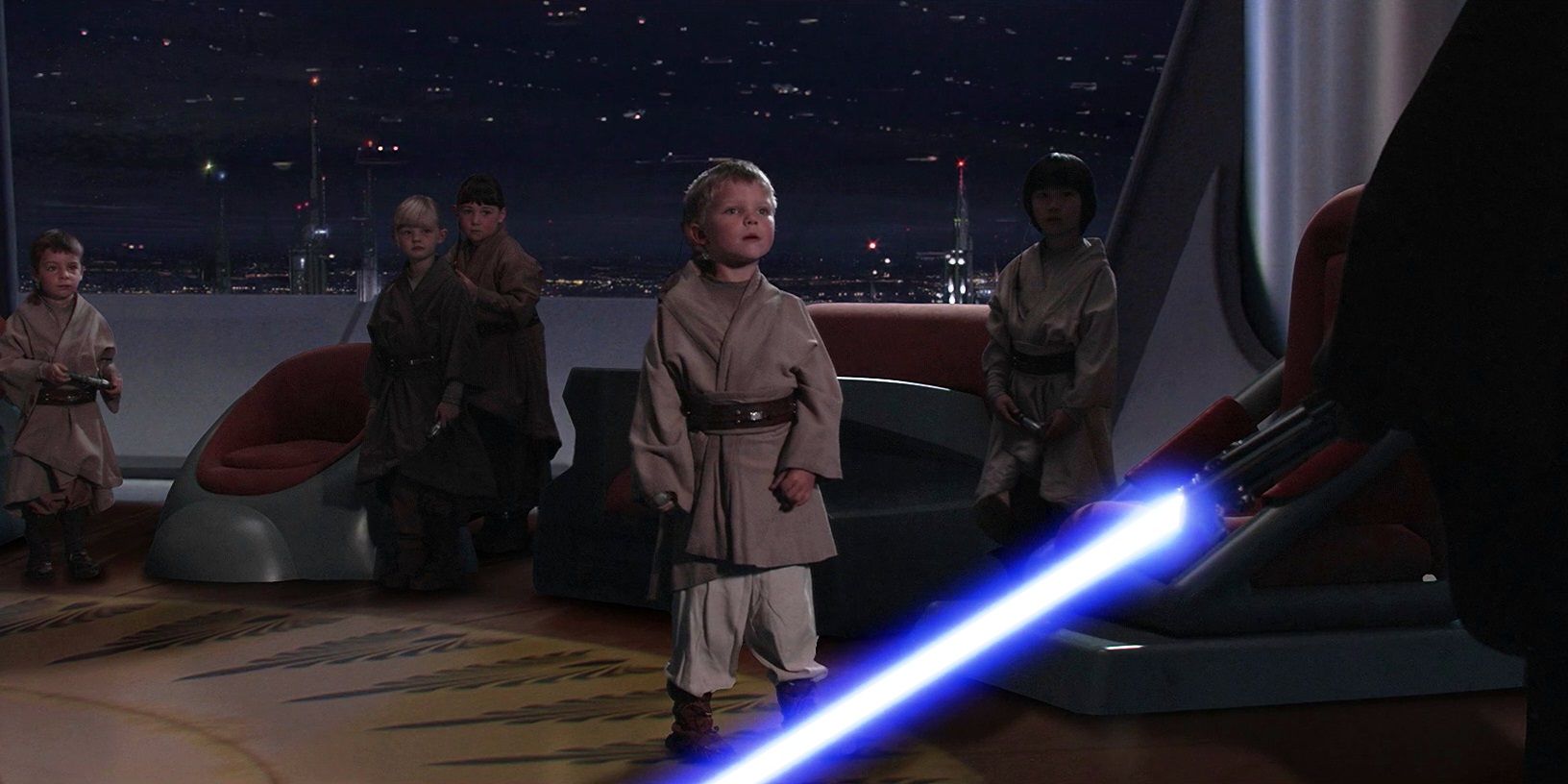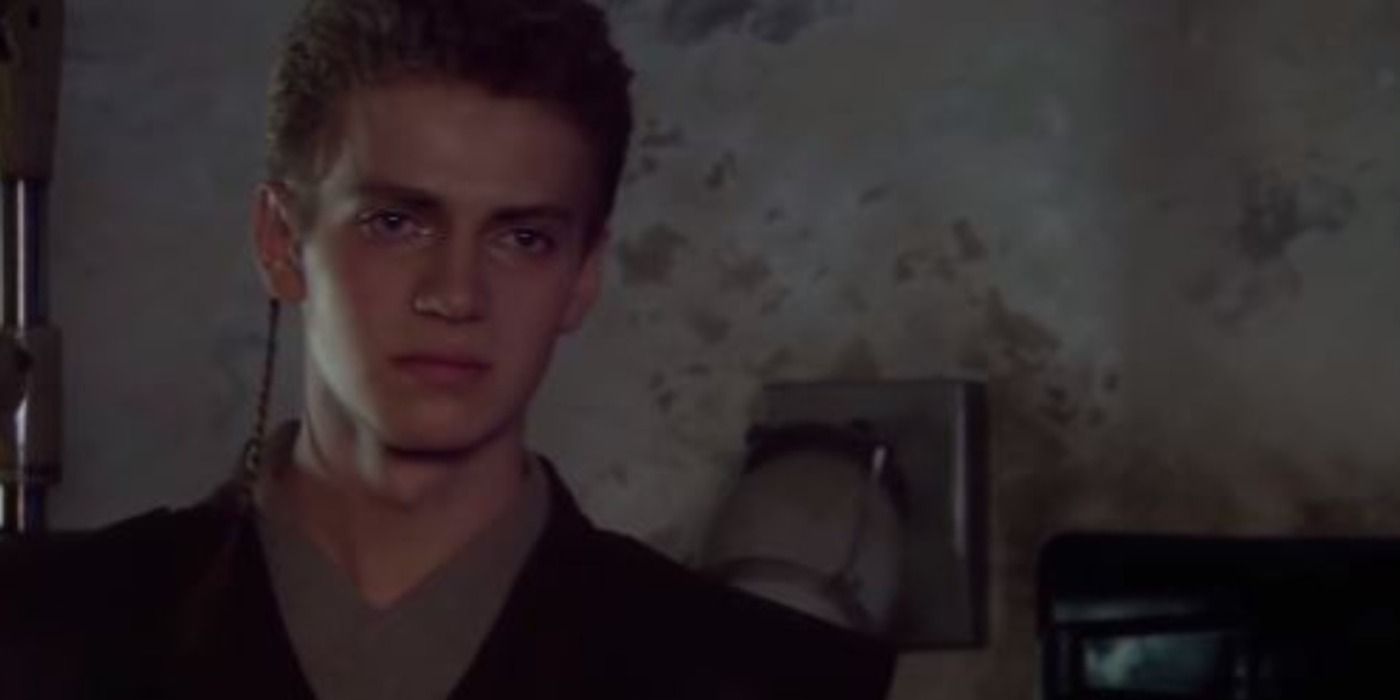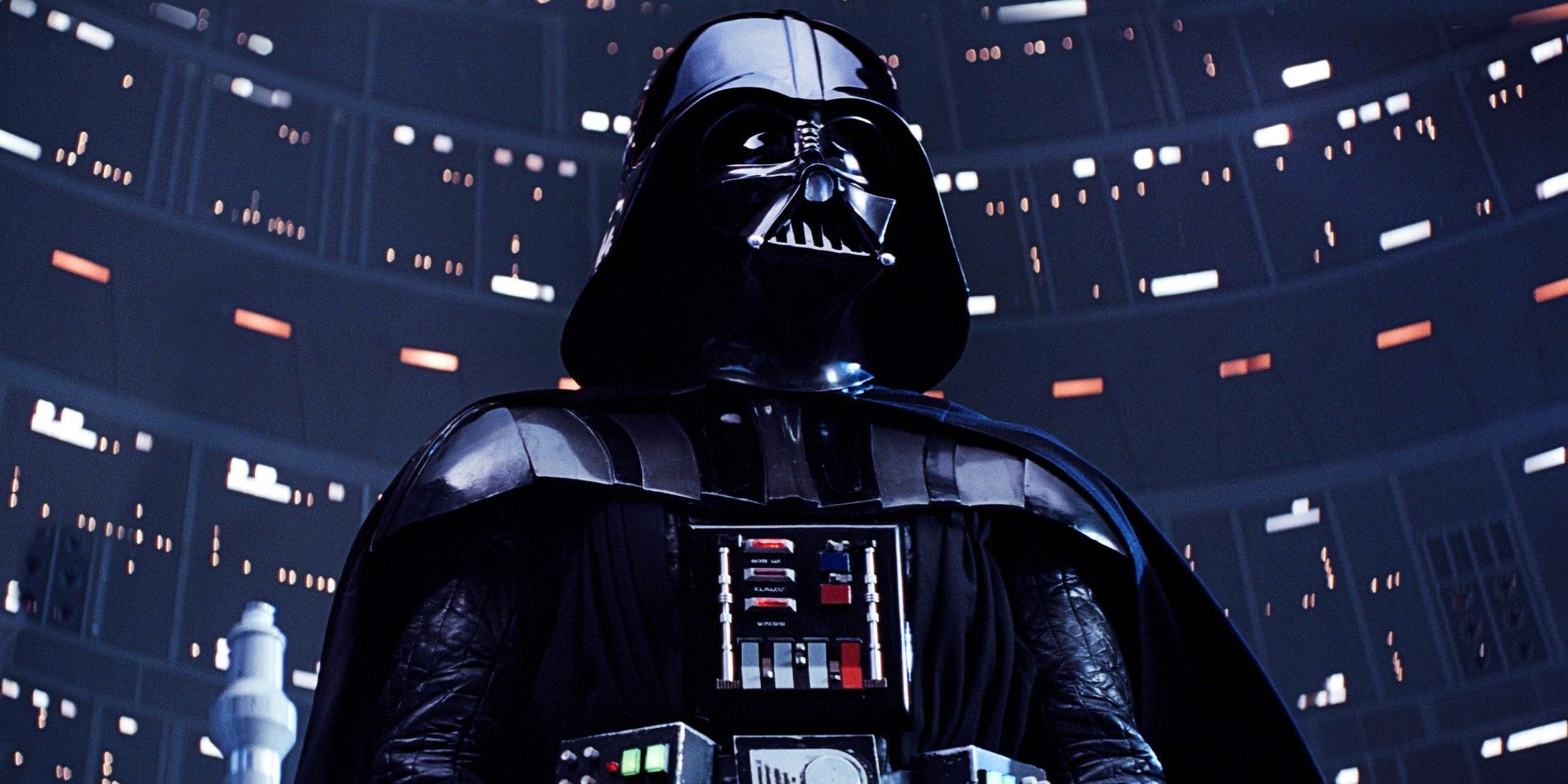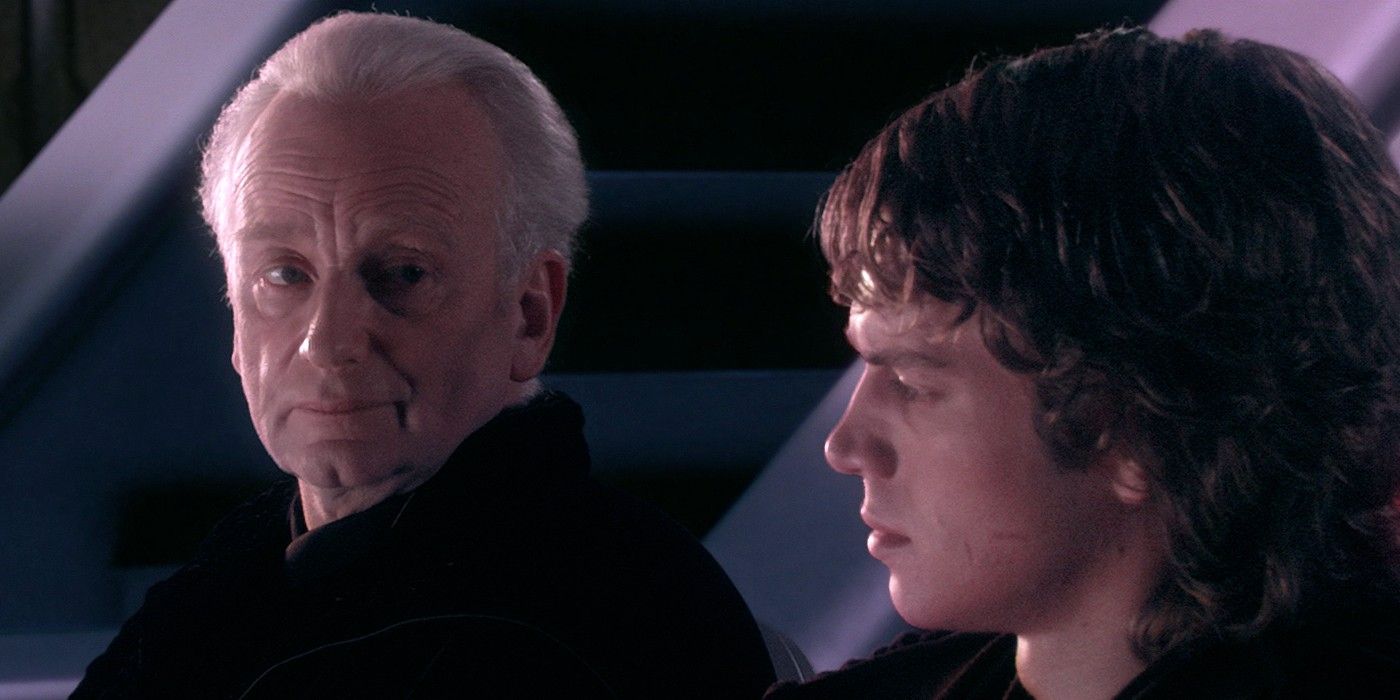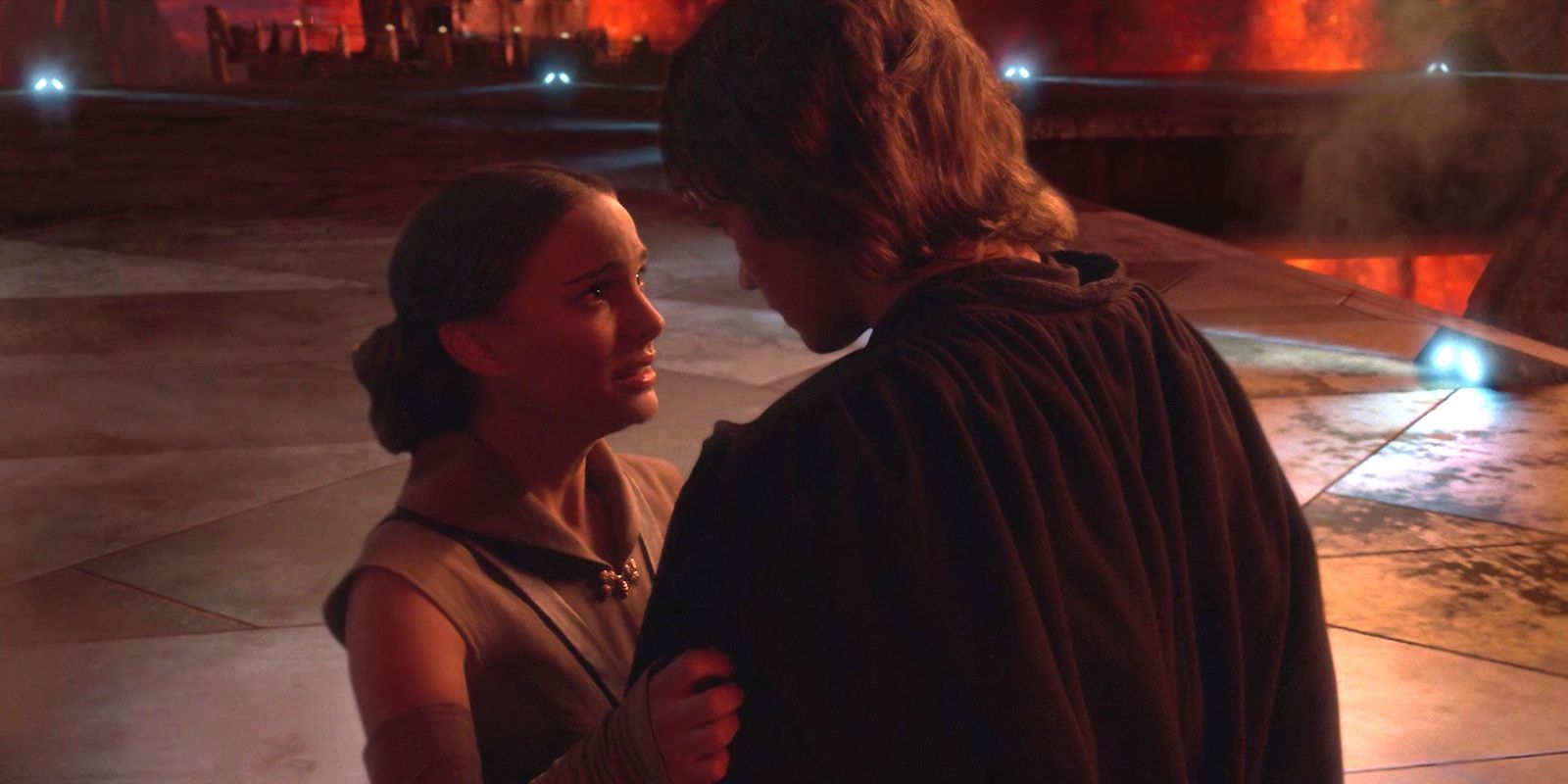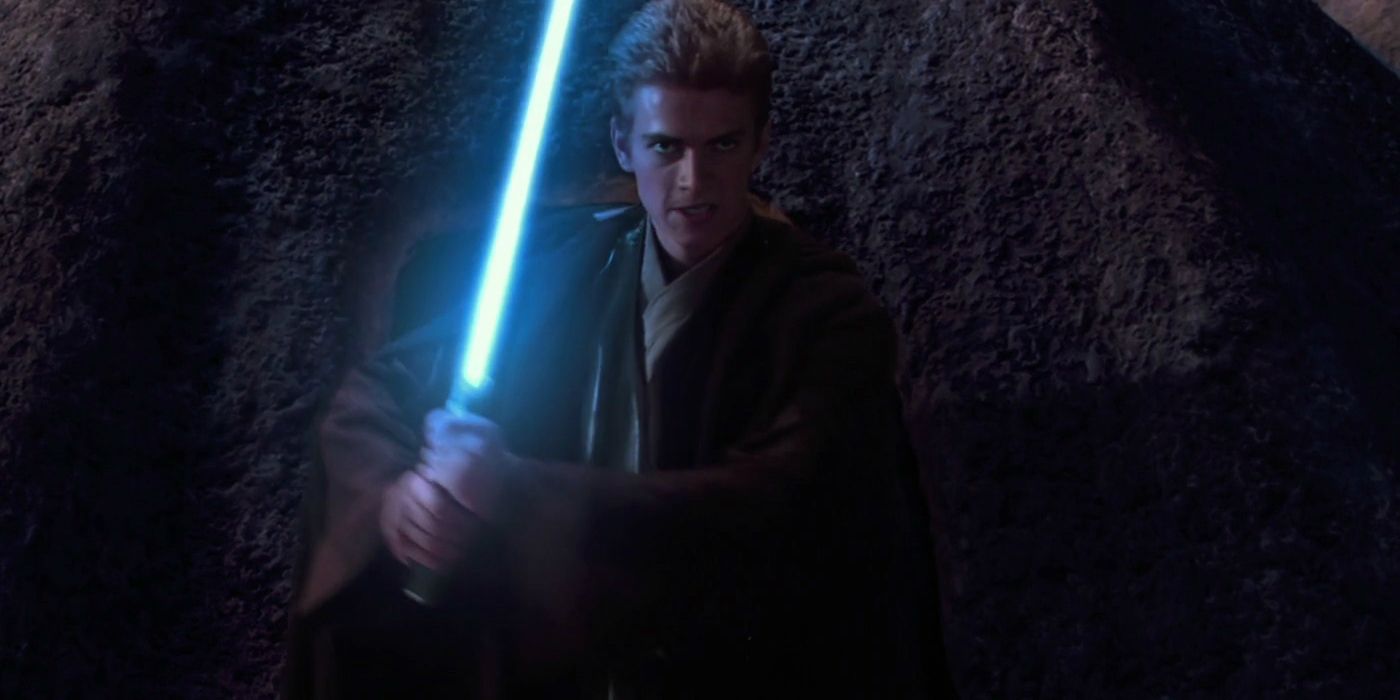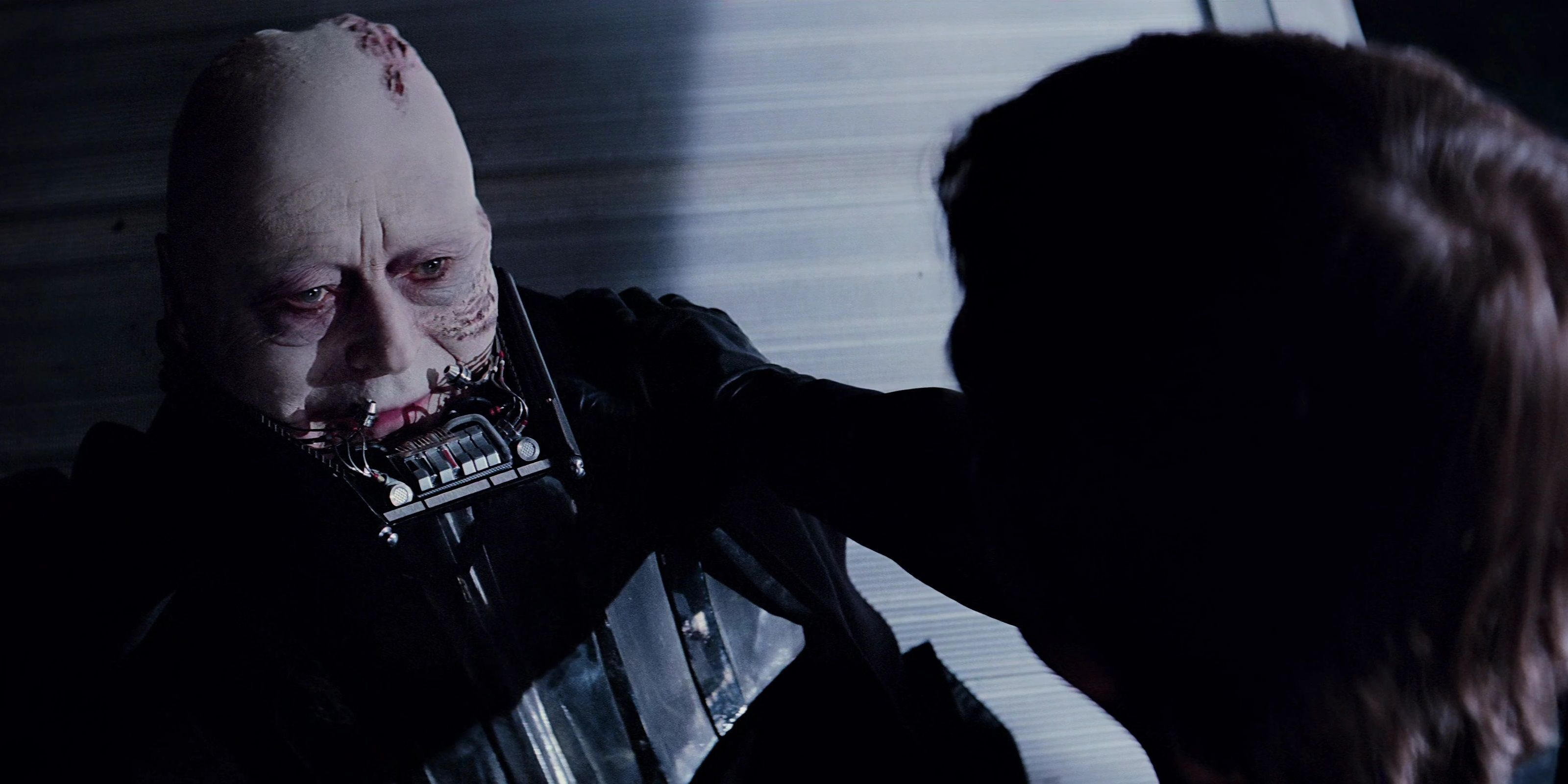Although the Star Wars franchise has since expanded to include sequels and spin-offs, George Lucas’ initial six-film saga told the tragedy of Anakin Skywalker. After the 1977 original movie introduced Darth Vader as the faceless embodiment of evil, Return of the Jedi’s redemptive finale and the subsequent prequel trilogy recontextualized Anakin as a tragic hero in the vein of Hamlet or Jay Gatsby.
But does Anakin really do enough good to outweigh the bad and earn back his “hero” status? He’s certainly a tragic figure, given his circumstances, but Anakin is arguably still a villain.
Yoda Sensed Darkness In Anakin’s Soul From The Very Beginning
Qui-Gon is ecstatic when he takes a nine-year-old Anakin’s midi-chlorian count and determines him to be the “chosen one” prophesized to bring balance to the Force. But when he brings Anakin before the Jedi Council back on Coruscant, Yoda isn’t so sure.
Yoda tells Anakin, “Much fear I sense in you, young Skywalker,” and explains that fear leads to the dark side (via various other emotions). He’s so sure that Anakin is destined to become a villain that he refuses to train him. He only agrees for Anakin to be trained as a Jedi after Qui-Gon’s manipulative dying wish forces his hand.
Anakin Is Diametrically Opposed To Star Wars’ Greatest Hero
There are many iconic heroes in the Star Wars universe, from Luke Skywalker to Mace Windu to Yoda, but arguably the franchise’s most inspiring, wholesome, and lovable protagonist is Obi-Wan Kenobi. He doesn’t hail from a special bloodline, he’s never been tempted by the dark side, and he always strives to do the right thing.
The prequel trilogy – specifically Revenge of the Sith – uses Obi-Wan as a counterpoint to Anakin. While Anakin is corrupted, Obi-Wan consistently proves himself to be incorruptible. By this metric, Anakin is diametrically opposed to Star Wars’ greatest hero.
Being Denied The Rank Of Master Was All It Took To Turn Anakin To The Dark Side
Palpatine begins manipulating Anakin and drawing him toward the ways of the Sith at the end of The Phantom Menace when he promises to watch his career “with great interest.” But what finally pushes Anakin over the edge is being denied the rank of Master.
Even though he’s being offered a lucrative spot on the Jedi Council that, even without the rank of Master, is unheard of for his young age, Anakin believes the Jedi have betrayed him and turns his back on them on a cosmic scale. All it took to turn Anakin to the dark side was the outrageous, unfair decision to postpone a job promotion.
Anakin Slaughtered The Younglings With Relative Ease
There are a lot of shocking moments during the Empire’s rise in Revenge of the Sith, from the death of liberty to the sound of thunderous applause to the clones gunning down the Jedi Knights they were sent to protect. But easily the most shocking is when Anakin confronts the terrified younglings, who look up to him for protection, and he promptly kills them all.
These aren’t the actions of somebody who’s morally conflicted; they’re the actions of a cold-hearted killer. Anakin marches into the Jedi Temple, ignites his lightsaber, and wipes out a room full of children with haunting ease.
He Always Acted Selfishly
Even before he turned to the dark side in Revenge of the Sith, Anakin was always shown to act selfishly. When Qui-Gon bargained for his freedom, he left Tatooine without his mom. A decade into his training, he chose the Sith over the Jedi simply because they offered more power.
He always sought to protect Padmé, but as a possessive boyfriend, he did that for himself. Unlike Luke, Leia, and Obi-Wan, who are always thinking about others, Anakin is always thinking about himself.
Darth Vader Was The Most Feared Presence In The Galaxy For Years
Star Wars fans like to cancel out Anakin’s time as Darth Vader, because a part of Anakin died when he went into the Vader suit and that part of him wasn’t reborn until he turned back to the light side and removed his helmet.
But the truth is, there was a man in that suit the whole time, making cold-blooded decisions like Force-choking underlings for small mistakes and blowing up entire planets full of innocent people. Civilians across the galaxy lived in fear of Vader and his regime for years.
Anakin’s Lust For Power Became His Downfall
Anakin is initially presented as a hero in the early prequel movies, as he constantly seeks out bad guys to bring to justice, but he acts heroically because he enjoys showing off his ever-increasing Jedi powers.
Eventually, the young Jedi padawan is corrupted by his incessant need for more power. When his Jedi training hits a wall and Palpatine teases the additional powers available to Sith Lords, he turns to the dark side. And, tragically, when Anakin finally had all the power in the galaxy, he felt cold and empty inside.
He Didn’t Kill Padmé, But He Did Force-Choke Her
The final piece of Anakin’s humanity is chipped away when he awakens in the Vader suit, asks if Padmé is all right, and Palpatine tells him, “It seems that, in your anger, you killed her.” This tips Anakin over the edge and causes him to pledge himself wholeheartedly to the Emperor.
Technically, Palpatine lied, but it’s not a huge leap from the truth. Anakin didn’t directly kill Padmé when she arrived on Mustafar, but he did Force-choke her and the ensuing heartbreak killed her. Either way, Anakin is responsible for her death.
He Kills Without Remorse
Throughout the prequel trilogy – and certainly in the original trilogy – Anakin kills people without the slightest hint of remorse. When he tells Padmé that he killed not just the men, but the women, and the children, too, he expresses no guilt over wiping out the Tusken Raider camp. In fact, he even seems proud of himself.
Anakin briefly regrets decapitating Count Dooku, because “it’s not the Jedi way,” but he quickly gets over that when he’s validated by Palpatine: “It is only natural. He cut off your arm and you wanted revenge.”
Anakin Is Only Redeemed In The Eyes Of His Son
The pesky sci-fi trope of unearned redemptions began with Darth Vader’s role in Return of the Jedi. But fans forget that in Jedi, Vader isn’t forgiven for his decades of war crimes and genocide – he’s only redeemed in the eyes of his son.
Luke initially refused to fight Vader in the Emperor’s throne room because he believed there was still good in his father. When Vader killed the Emperor to save Luke, he made the ultimate sacrifice to prove his son right. But that doesn’t just nullify every terrible thing Anakin did under the guise of Vader.

